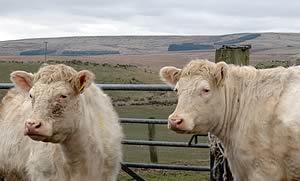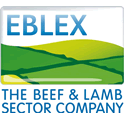 |
|||||||||
|
|||||||||||||||||||
|
|
New
Emergency Cattle Slaughter Rules Warning
Some cattle may be prevented from entering the human food chain and become worthless in the wake of new EU-wide hygiene rules on emergency slaughter introduced from January 1, 2006, warns the English Beef and Lamb Executive (EBLEX). The new legislation, which allows only healthy and clean animals to be submitted for slaughter for human consumption, means cattle that are diseased or injured may have to be slaughtered on farm as emergencies without payment. While such stock could previously be disposed of through the OTMS, this will no longer be possible. Where an animal has suffered a genuine accident and has to be slaughtered on welfare grounds the legislation does allow them to enter the food chain following an inspection on farm by a veterinary surgeon. Decisions, in conjunction with your vet, will have to be made for animals that have not suffered a genuine accident. They will need to be fit for human consumption and be fit to be transported. For animals to be acceptable for the food chain from January 1, in addition to being clean and meeting the statutory withdrawal periods for veterinary medicines they must be deemed fit for human consumption. This means showing no diseases or conditions that may affect public health. Additionally, stock must be fit to travel. Stock that are not fit for travel, and not fit for the food chain or for on-farm slaughter for the food chain will have to be disposed of as fallen stock. These new hygiene regulations make it even more essential for English dairy and beef producers to plan and manage their post-OTMS culling strategies with particular care to maximise their cull cow returns and minimise their replacement costs; especially so if they have routinely been culling a significant proportion of their stock for ill-health. Alongside the better finishing and overall presentation of cull cows for slaughter, EBLEX advises all concerned to avoid consigning sick animals for the human food chain as well as to secure veterinary certification of fitness to travel for any stock of doubtful health status. Where animals are not fit to be transported without unnecessary suffering and are to be consigned for the human food chain as genuine emergencies, producers are further advised to establish their abattoir is prepared to accept them ahead of time and ensure animals slaughtered on-farm are accompanied by a veterinary surgeon’s ante-mortem inspection declaration, citing the reason for the emergency slaughter. Practical advice on meeting the requirements of the new legislation is available in a special leaflet on emergency slaughter which was sent to all cattle producers in October 2005. A more detailed booklet from the BCVA, NFU, FSA and Rural Affairs Departments is available by telephoning 0845 606 0667. |
||||||||||||||||||

|
|
||||||||||||||||||
| home | agri-services | pedigree
pen | news | dairy | beef | machinery BPS | property | organisations | site map |
|||||||||||||||||||

